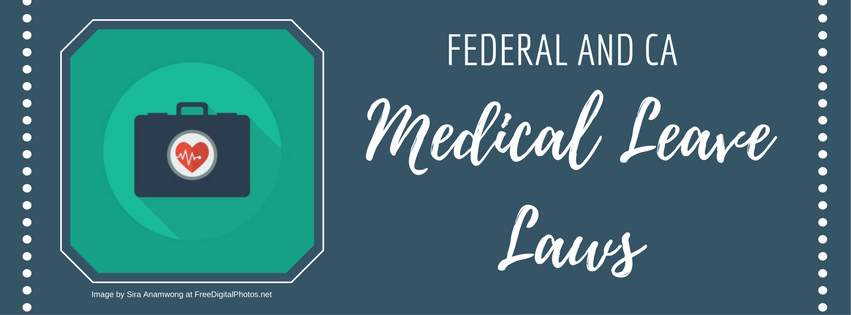Are you aware of the local and national laws regarding medical leave for your employees? An article from Swipeclock.com, written by Annemaria Duran, provides us with knowledge on businesses can stay in compliance with different levels of employment laws.
In the United States three main levels of employment law can apply to employers simultaneously. Locally, businesses may have to comply with city or county employment law. In addition every state has labor laws and the United States Department of Labor oversees employee to employer relationships.
In the case of Family or Medical leave, this sometimes means that employers have to be aware of multiple laws. While often these laws appear to duplicate requirements, in reality, these laws often create variations of requirements for compliance. Owners, managers, and HR departments are often not aware of the variations and inadvertently break these leave laws.
Here is a little information on both the federal and California leave requirements:
United States Family Medical Leave Act
The Family Medical Leave Act (FMLA) was put into law in 1993. The law oversees companies across the United States. FMLA applies to employers who have at least 50 employees within a 75 mile radius. Their employees who have worked at least 1 year and 1,250 hours in the last year are eligible for FMLA leave.
FMLA provides up to 12 weeks of leave for family or medical purposes. In specific circumstances, employees can take up to 26 weeks of protected leave. Employees are able to take leave to bond with new children, care for ill family members, or take care of their own serious illness. Family members that are included in the act includes the employee’s child, spouse, or parents.
In addition, when an employee leaves to care for a seriously ill service member, they may take up to 26 weeks of leave. Lastly, employees may take leave for military exigencies.
California Family Medical Leave and Pregnancy Leave
Both the California Family Rights Act and Pregnancy Disability Act provide protected leave for families.
The Pregnancy Disability Act covers employers with 5 or more employees and provides up to 4 months of leave due to pregnancy disability. Often this leave can be used simultaneously with FMLA leave. Employees are eligible for pregnancy disability leave for every pregnancy, regardless of if two pregnancies occur in the same year or not. One exception to this is with new employees who would not qualify for FMLA leave and small businesses employees.
In addition, California also requires protected leave through the California Family Rights Act (CFRA). CFRA provides 12 weeks of leave in a 12 month period. As with FMLA, CFRA provides leave for bonding after the birth or placement of a child into the home, to care for seriously ill family members, or for the employee’s own serious illness.
One key difference from FMLA is that CFRA provides leave for more family relationships. When these relationships are the reason for leave, the employee only uses CFRA and will not simultaneously take FMLA.
We featured the California section of this article, but if you are interested in another states’ requirements you can read the entire article for a full synopsis of Family, Medical, and Parental Leave Laws across the U.S.A. here: http://www3.swipeclock.com/family-medical-leave-parental-leave-laws-across-the-united-states/
